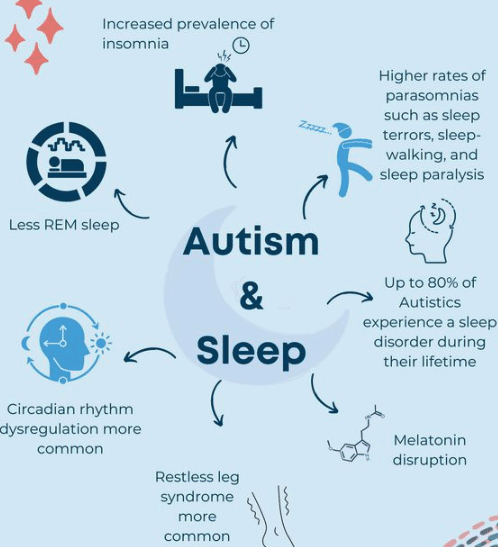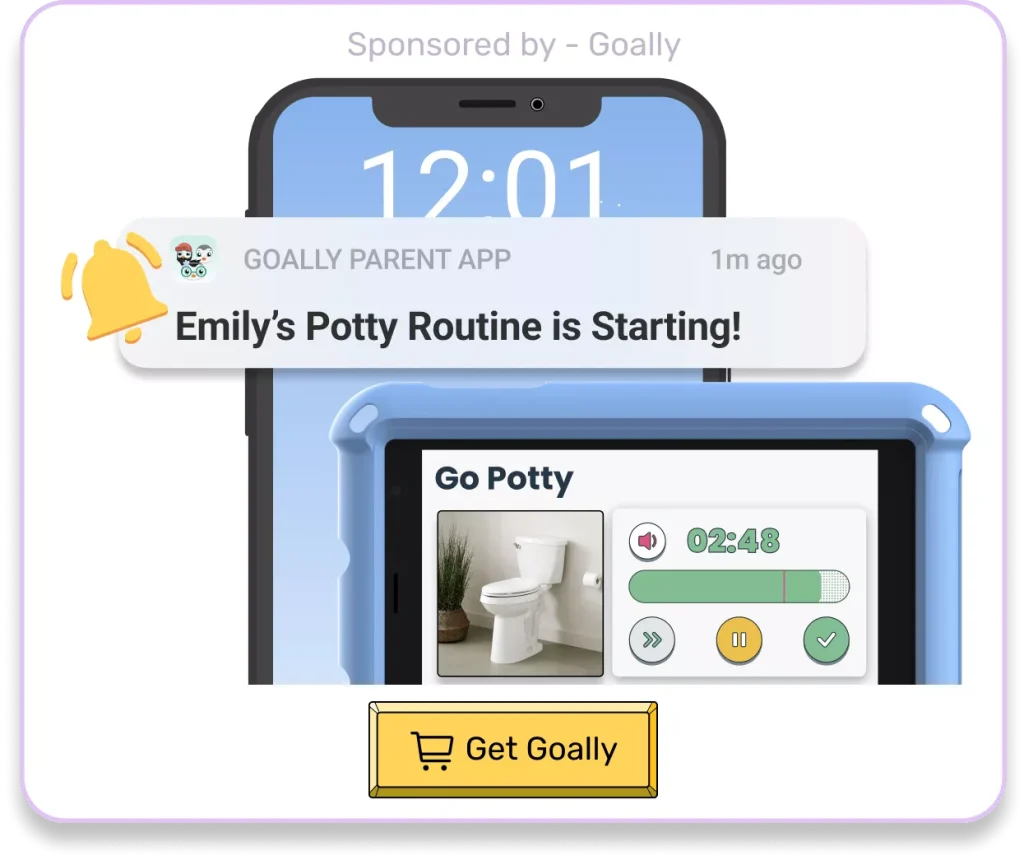If bedtime is a constant struggle for your family, you’re not alone. It’s estimated that 44 to 83 percent of children with autism have sleep disorders. There are several theories as to why children with ASD struggle to get a good night’s sleep. But as a parent, solving the problem is likely your number one goal. As difficult as it may seem, there are solutions to the connection between autism and sleep disorders! If your child has sleep issues, read on to learn how you can help them establish a healthy bedtime routine!
Table of Contents
What Is the Autism and Sleep Connection?
When it comes to sleeping, there are a lot of different things that can impact it – like our mental state, emotions, physical health, genetics, and the environment we’re in. For kids with autism, in particular, they often struggle with falling asleep, have nightmares, and feel restless throughout the night. It’s definitely not easy, but there are some reasons that might help explain why autism and sleep issues are connected.
Goally | Visual Scheduler for Autism
Does your child struggle with getting ready in the morning independently? Goally’s routine app on the best tablet for kids breaks down large tasks into small, achievable steps for autistic kids. Create custom routines with your own videos & pictures for every step.
Sensory Problems
A majority of children with ASD display sensory problems. And research shows that hypersensitivity can have a profound impact on autism and sleep issues.
One study found that children sensitive to touch had the largest variance in sleep problems. Touch sensitivity had the strongest relationship to poor sleep at a 24 percent rate. Researchers speculate that touch sensitivity results in weak sleep onset and maintenance.
Anxiety Levels
Children with autism and sleep problems may be more affected by anxiety. In fact, the combination of anxiety and ASD may predispose kids to sleep problems! There’s no explanation yet, but researchers believe it may be due to hyperarousal. Their fight-or-flight response is constantly activated, making it difficult to relax. Anxiety can result in several bedtime problems, including resistance, delays, duration, and night waking.
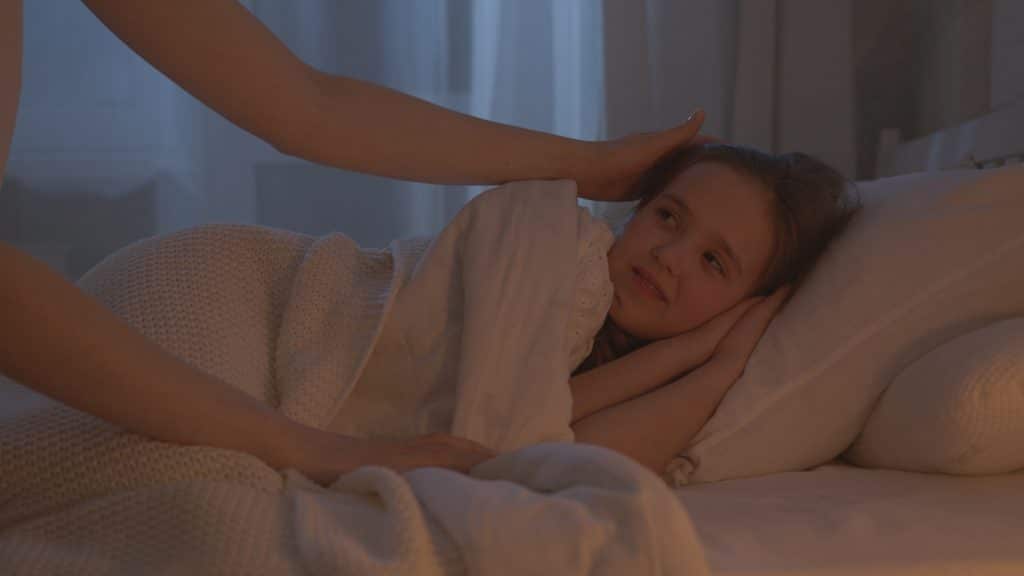
Severity of Symptoms
Yet other research shows that the severity of autism symptoms may be to blame for sleep issues. These findings make researchers think that sleep disturbances are part of the ASD complex.
Indicators of poor sleep were high levels of hyperactivity, mood variability, and aggression. Children with more severe symptoms in these areas struggled the most with sleep. The most common bedtime problems were restlessness and trouble falling asleep.
Melatonin Abnormalities
Various studies found that kids with ASD tend to have a different melatonin rhythm. Melatonin is a hormone that naturally regulates our sleep-wake cycle. There are also other neurotransmitters like serotonin and gamma-aminobutyric acid that can help with sleep.
Children with ASD have demonstrated impaired levels of these neurotransmitters. The studies conclude that melatonin levels may be partly to blame for poor sleep quality. Some mention melatonin gummies or medication as possible treatment options.
Three Ways You Can Help With Autism Sleep Issues at Home
Parents can take charge of their children’s sleep problems by establishing simple routines. And the key to maintaining these routines is consistency. Children with ASD often struggle to cope with change, so consistent schedules may lead to improved sleep.
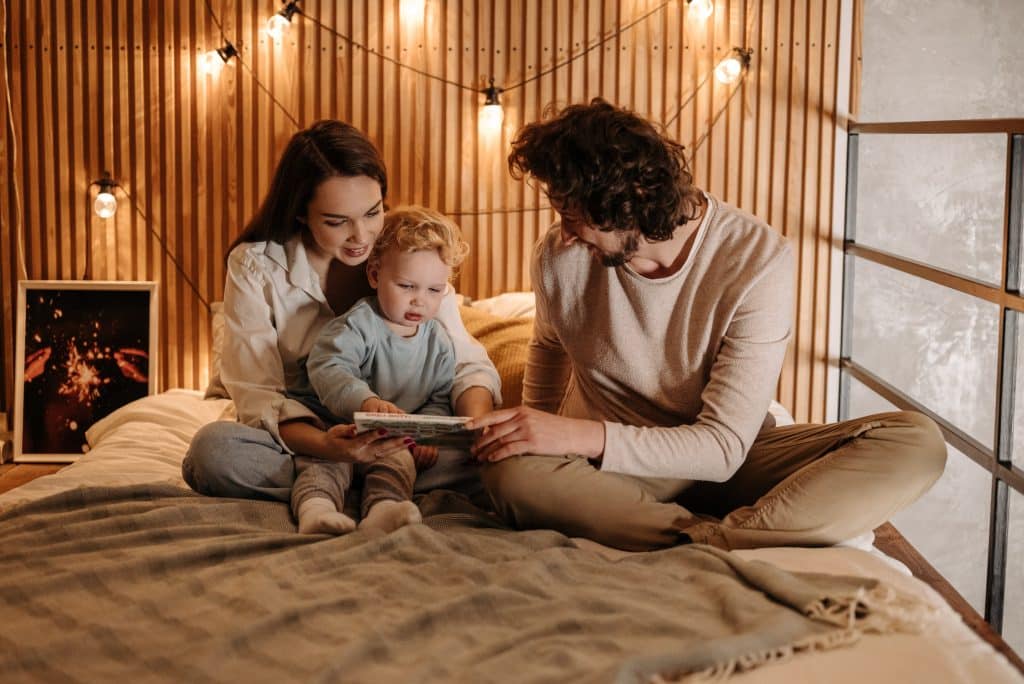
Read more: Bedtime Routine for a Child
1. A Good Bedtime Routine
A good bedtime routine should follow a set of specific steps. These steps are designed to relax your child and give them cues that bedtime is approaching. Gradually transition from active activities like running or playing to calm activities like reading or bathtime.
| Autism and Sleep: Elements of a Good Bedtime Routine | |
|---|---|
| Steps | Details |
| Gradual Transition | Move from active activities like running or playing to calm activities like reading or bathtime. |
| Rewards and Reinforcement | Use rewards to help your child transition through the steps of the routine. |
| Visual Cues | Clear and consistent cues like visual charts or checklists can help your child understand it’s time to move to the next step. |
| Bedtime Fading | Set a late bedtime and gradually move it to an earlier, desired time. For example, start with a 10 p.m bedtime, then reduce it by ten minutes each day until you get to the desired time. |
Rewards and reinforcement help your little one transition through the steps. Clear and consistent cues are needed to help them understand it’s time to move to the next step. Parents often do this through visual charts or checklists!
The use of “bedtime fading” has been extensively studied and shows positive outcomes. The process consists of setting a late bedtime and gradually moving it to an earlier, desired time. For example, start with a 10 p.m bedtime, then reduce it by ten minutes each day until you get to the proper time.
2. Consistency
Studies show that consistency is closely linked with longer sleep durations. It may take some work, but developing and maintaining routines is one of the best ways to encourage sleep. Try these methods for creating consistency:
- Turn off electronics two hours before bed
- Transition your child to calm activities like reading
- Create a relaxed environment by dimming lights and maintaining quiet
- Give a verbal/visual sleep cue 30 minutes before bed
- Provide another reminder 10 minutes before bed
- Transition to bathroom activities like toothbrushing
- Head to bed for bedtime stories
- Always maintain a consistent wake-up time
Performing the same steps every day will allow your child to prepare more easily. At the same time, maintaining visual reminders and cues allows them to remain more independent. Technology can be a great help when it comes to tracking visual goals.
3. Technology
The use of visual directions like planners, calendars, and checklist are well-known to parents. But sometimes, work and life can get in the way, and the results aren’t always consistent. That’s where technology comes in. Rather than relying on paper methods, try using a dedicated app designed for children with ASD. The Goally device is a distraction-free method of tracking activities and progress. Kiddos can retain autonomy and build independence by using this tool!
The interactive device has several amazing features! Checklists let children preview all the steps at once. Reminders keep them on track without any intervention from parents. You can even use a rewards system to keep children motivated. Goally is completely customizable to better suit your child’s needs. You can request a demo to better understand the system and see how efficient it is!
Unlike tablet or phone apps, the Goally device is distraction-free. The only program your child can access is what you’ve created. It’s also durable and pocket-sized for portability! The visual schedule on Goally is the perfect method for establishing strong bedtime routines. You can create as many routines as you want and customize them with pictures and sounds. Reward points add up when tasks are complete!
What To Do if Your Child Keeps Having Sleep Problems
If you’ve tried creating routines and consistency, but bedtime is still a wistful dream, you may need a different approach. Using a device like Goally can be an engaging, fun, and effective way to approach sleep problems.
Break up the bedtime routine into tiny steps with Goally and let children move through them independently. Remain consistent, with just a bit of flexibility, and keep the process enjoyable. With some time and a bit of effort, your child may start to adapt to their new bedtime routine.
Goally | Routines that Actually Work
Goally’s skill building tablet for kids has routines that break down large tasks into small, achievable steps. It helps kids complete their tasks independently!
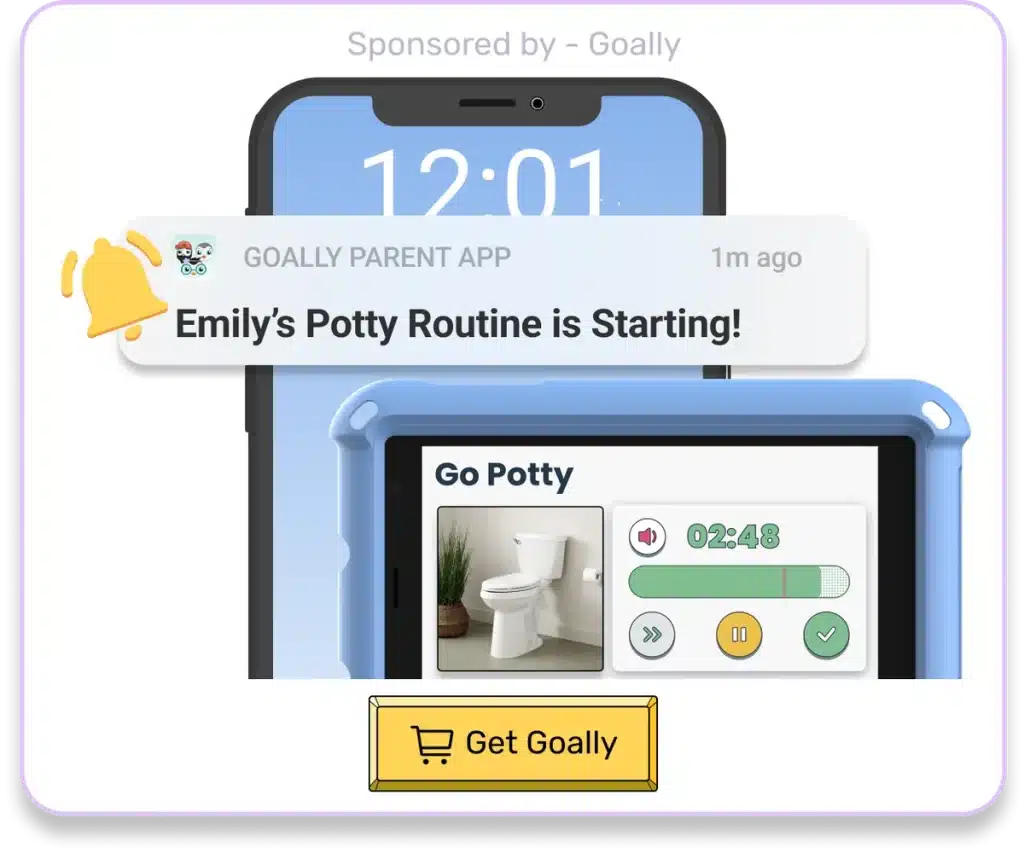
Create custom routines with your own videos & pictures for every step. The steps come in small, bite-sized pieces to help your child learn the little fundamentals (like putting the toothpaste on their toothbrush!) to achieve bigger goals. And that’s just the beginning. See it in action:
Counting Sheep: A Better Night’s Sleep
The combination of autism and sleep disorders can be mentally and physically draining on both parents and children. But focusing on bedtime routines and consistency can make a world of a difference. Rather than relying on paper checklists and visuals that are hard to keep track of, try Goally! Our fully customizable, kiddo-approved device helps make routines a fun and simple process. Get started today with one of our plans and let your child navigate the world independently!
FAQs About Autism and Sleep
Why do children with autism have trouble sleeping? Children with autism may have difficulty sleeping due to sensory sensitivities, anxiety, and other issues related to their condition. Additionally, they may be taking medications that can disrupt their sleep. What are some strategies for helping children with autism get better sleep? Some strategies that may help children with autism get better sleep include establishing a consistent bedtime routine, creating a calming sleep environment, and using tools like white noise or weighted blankets to promote relaxation. Can melatonin supplements help children with autism sleep better? Melatonin supplements may be helpful for some children with autism who have trouble falling or staying asleep. However, it's important to talk to a healthcare provider before giving any supplements to a child. How can parents manage sleep disturbances in children with autism? Parents of children with autism can try to manage sleep disturbances by identifying the underlying cause of the problem, using behavioral strategies like positive reinforcement, and seeking help from healthcare providers or sleep specialists if needed. What are some signs that a child with autism is not getting enough sleep? Signs that a child with autism is not getting enough sleep may include irritability, hyperactivity, difficulty concentrating, and changes in behavior or mood.
This post was originally published on 02/08/2022. It was updated on 09/21/2023.

Goally
We help parents teach their kids life skills, like doing bedtime and morning independently. Backed by science, we incorporate evidence-based practices and expert-informed designs in all of our apps and content.
